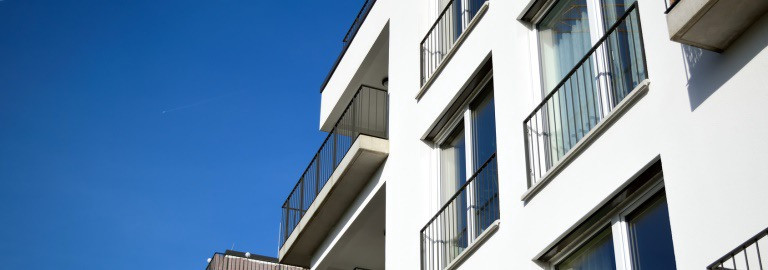
In Prague, apartments on disused industrial sites are finally starting to emerge. Available apartments are still scarce, though.
The Prague Institute of Planning and Development (IPR) released an analysis of projects that tracks important aspects of the Prague apartment market such as where, at what pace, how many and what types of apartments are built, as well as how the demand develops. Developers are starting to use former industrial sites for housing construction, especially in the Prague districts of Vysočany and Hloubětín.
The city wants to increase the amount of housing to keep people from leaving to seek opportunities elsewhere.
“Prague is and will always be a magnet for citizens from the whole of the country, and it has to respond to it with adequate housing. The availability of housing has to be a long-term goal, otherwise educated and skilled people will avoid Prague and we do not want to allow it. Prague must be successful in retaining talent in the competitive environment of cities in the Central European region,” Prague Deputy Petr Hlaváček said.
In September 2018, some 3,114 free apartments were available, representing a quarter of the total of 12,502 projected until 2021. The average floor area of available new apartments is 80 square meters. A new Prague flat costs an average of Kč 7,877,859, or Kč 97,216 per square meter of floor space. Year-on-year, in September 2018, the prices of new dwellings increased by 11 percent.
Even though price growth has been slowing down, the current price level on the residential market no longer corresponds to the financial possibilities of most of Prague's population, according to City Hall.
The main causes of high demand for dwellings include economic growth and Prague’s low level of unemployment, population growth, long-term low interest rates, and a strong level of investment demand that the supply side fails to respond to adequately.
In the first nine months of 2018, nearly 20,000 people arrived in Prague and Central Bohemia, and this trend will not change in the years to come. Newly arrived inhabitants often find affordable housing in Central Bohemia and commute to the city daily.
“As far as Prague is concerned, most of the apartments are located in Letňany, Modřany and Vysočany,” IPR director Ondřej Boháč said.
In Vysocany new flats are being created especially on the area of former industrial complexes. In Prague there are more than 1,000 hectares of such sites. Overall, new housing construction is concentrated mainly in the northeastern part of the city. The administrative districts of Prague 8, 9 and 18 have 36 percent of new dwellings as of September.
Red tape is a big issue. “Prague's biggest problem with affordable housing is the insufficient supply of apartments. This is mainly due to the fact that the getting permits for constructions takes many years and the legal deadlines are not observed during zoning and construction proceedings. Therefore, our immediate priority is to accelerate the process for getting permits. We support a rapid amendment to the Building Act. At the same time, following the example of Vienna, Munich and other cities, we are preparing proposals on how large buildings could be approved in Prague,” City Councilor Hana Kordová Marvanová, responsible for legislation, public administration and housing support, said.
Developers have long called for a reduction in red tape. It can take up to 10 years to get all the permits for a new housing development, making one of the most drawn out procedures in Europe.
Height limits on new buildings in Prague are in part because of the city center’s status as a UNESCO World Heritage Site, and efforts to maintain the look of the historical city center.
